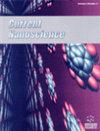微生物影响终极腐蚀 (MIC) 的最新进展:综述
IF 1.5
4区 材料科学
Q4 BIOTECHNOLOGY & APPLIED MICROBIOLOGY
引用次数: 0
摘要
:在各种工业、医疗和航空航天应用中,金属表面的持久腐蚀是一项重大的工程挑战,包括材料降解、金属结构完整性丧失和巨额维护成本。古细菌、细菌、真菌和微藻等微生物会直接或间接地影响金属腐蚀。腐蚀性和腐蚀愈合的程度因微生物、介质和金属基质的特性而异。人们曾多次尝试揭示有关 MIC 的所有问题的答案。已发表的报告主要集中在不同情况下的失败见证和实验室或现场测试。本综述概述了最新的 MIC 研究,并强调了有关 MIC 检测、估算和最新 MIC 管理方法数据的稀缺性。综述扩展了之前报告的工作,并总结了为更好地理解和切断先进技术中的 MIC 管理所做的努力。此外,文章最后还讨论了当前和未来防止微生物诱发腐蚀的弊端和保护系统。本文章由计算机程序翻译,如有差异,请以英文原文为准。
Recent Advances of the Ultimate Microbial Influenced Corrosion (MIC): A Review
: The persistent corrosion of metal surfaces poses a significant engineering challenge, including material degradation, loss of metal-structural integrity, and massive maintenance costs in various industrial, medical, and aerospace applications. Microorganisms such as archaea, bacteria, fungi, and microalgae can directly or indirectly influence metal corrosion. The degree of corrosiveness and corrosion healing varies depending on the microbe, medium, and metal substrate characteristics. Several attempts have been made to reveal answers to all questions about MIC. The published reports focused on testimonial failures and laboratory or field tests under varied situations. This review offers an overview of the most recent MIC research and emphasizes the scarcity of data on MIC detection, estimation, and the most recent approaches for MIC management. The review extends previously reported works and summarizes efforts for better understanding and cutting off MIC management in advanced technologies. Furthermore, it concludes with a final discussion of the current and future drawbacks and protective systems for preventing microbial-induced corrosion.
求助全文
通过发布文献求助,成功后即可免费获取论文全文。
去求助
来源期刊

Current Nanoscience
工程技术-材料科学:综合
CiteScore
3.50
自引率
6.70%
发文量
83
审稿时长
4.4 months
期刊介绍:
Current Nanoscience publishes (a) Authoritative/Mini Reviews, and (b) Original Research and Highlights written by experts covering the most recent advances in nanoscience and nanotechnology. All aspects of the field are represented including nano-structures, nano-bubbles, nano-droplets and nanofluids. Applications of nanoscience in physics, material science, chemistry, synthesis, environmental science, electronics, biomedical nanotechnology, biomedical engineering, biotechnology, medicine and pharmaceuticals are also covered. The journal is essential to all researches involved in nanoscience and its applied and fundamental areas of science, chemistry, physics, material science, engineering and medicine.
Current Nanoscience also welcomes submissions on the following topics of Nanoscience and Nanotechnology:
Nanoelectronics and photonics
Advanced Nanomaterials
Nanofabrication and measurement
Nanobiotechnology and nanomedicine
Nanotechnology for energy
Sensors and actuator
Computational nanoscience and technology.
 求助内容:
求助内容: 应助结果提醒方式:
应助结果提醒方式:


